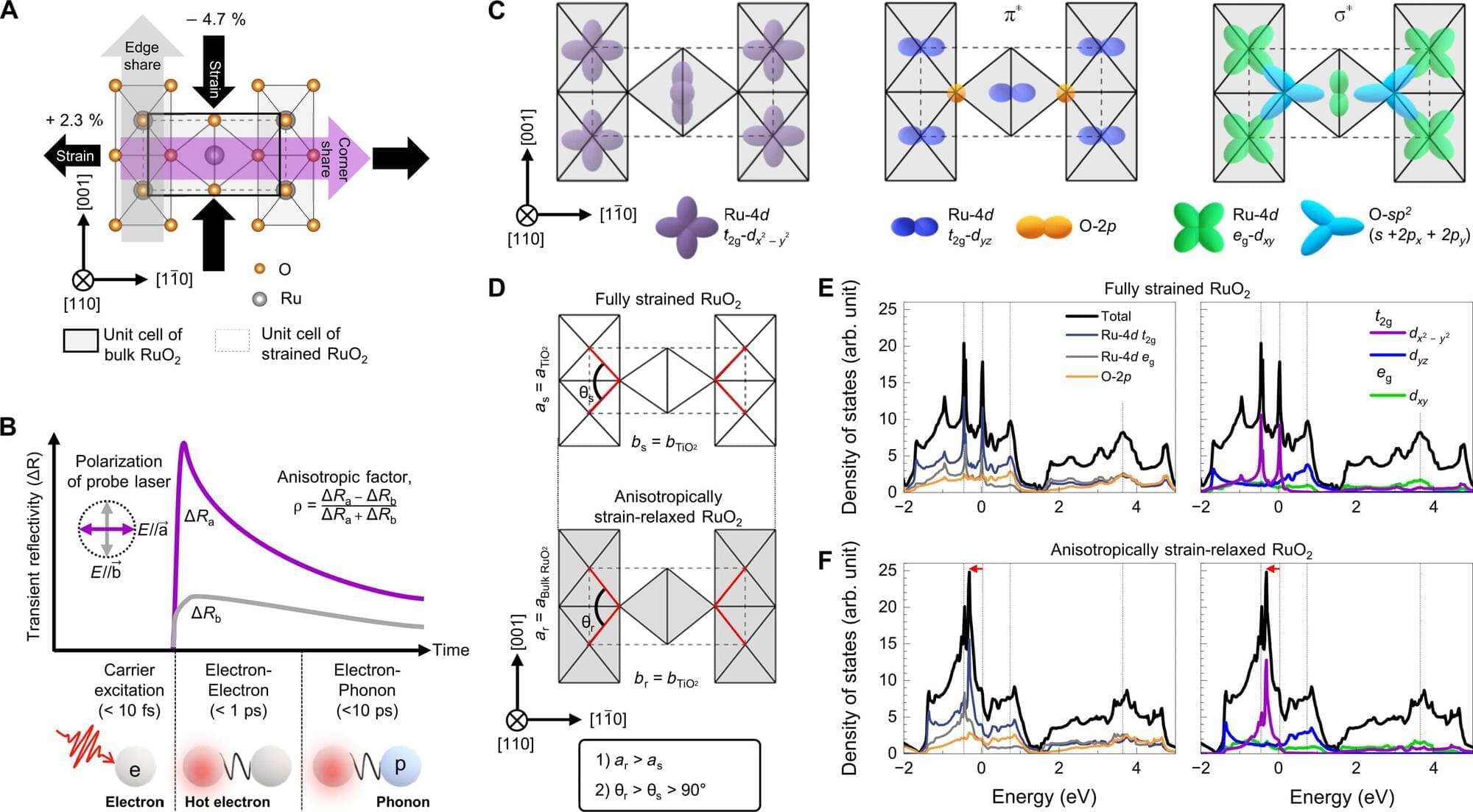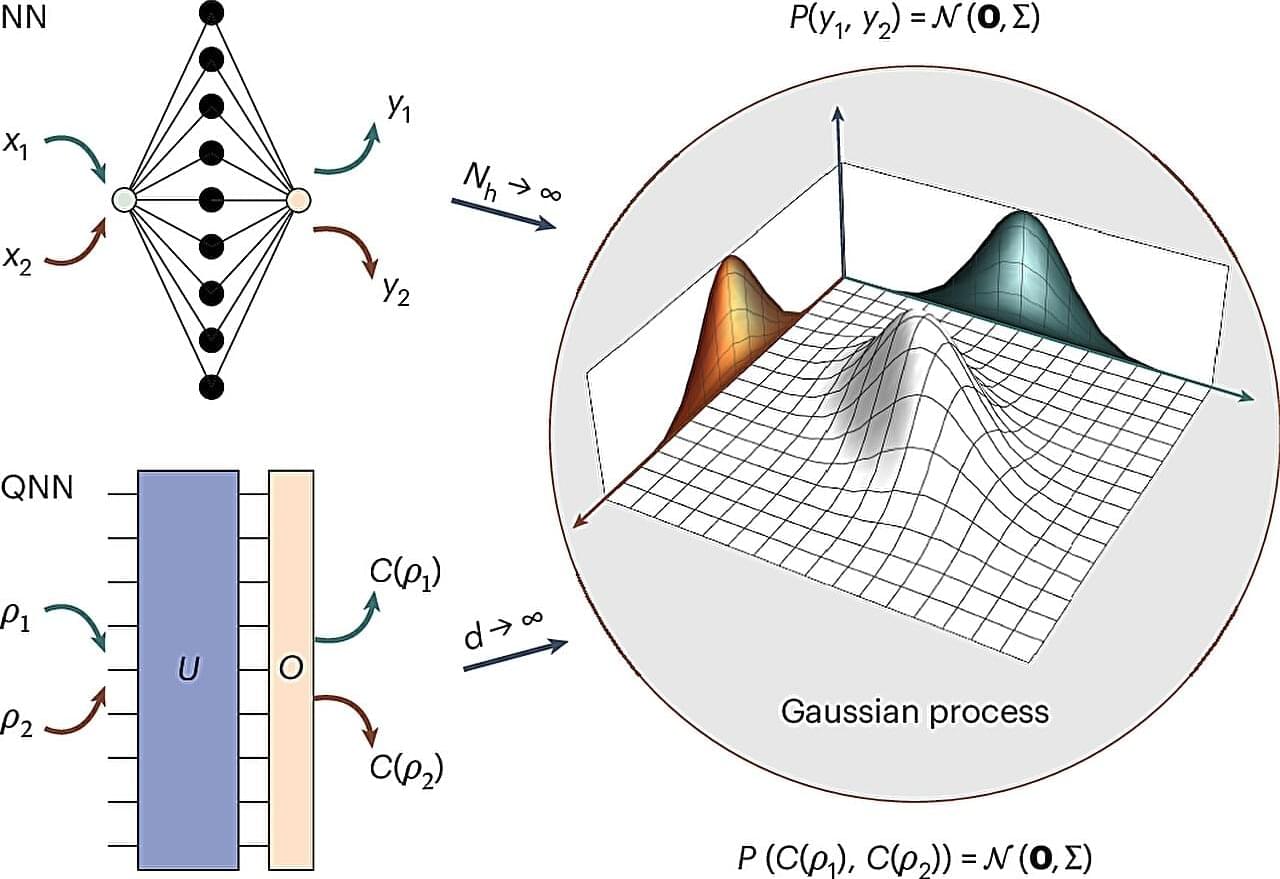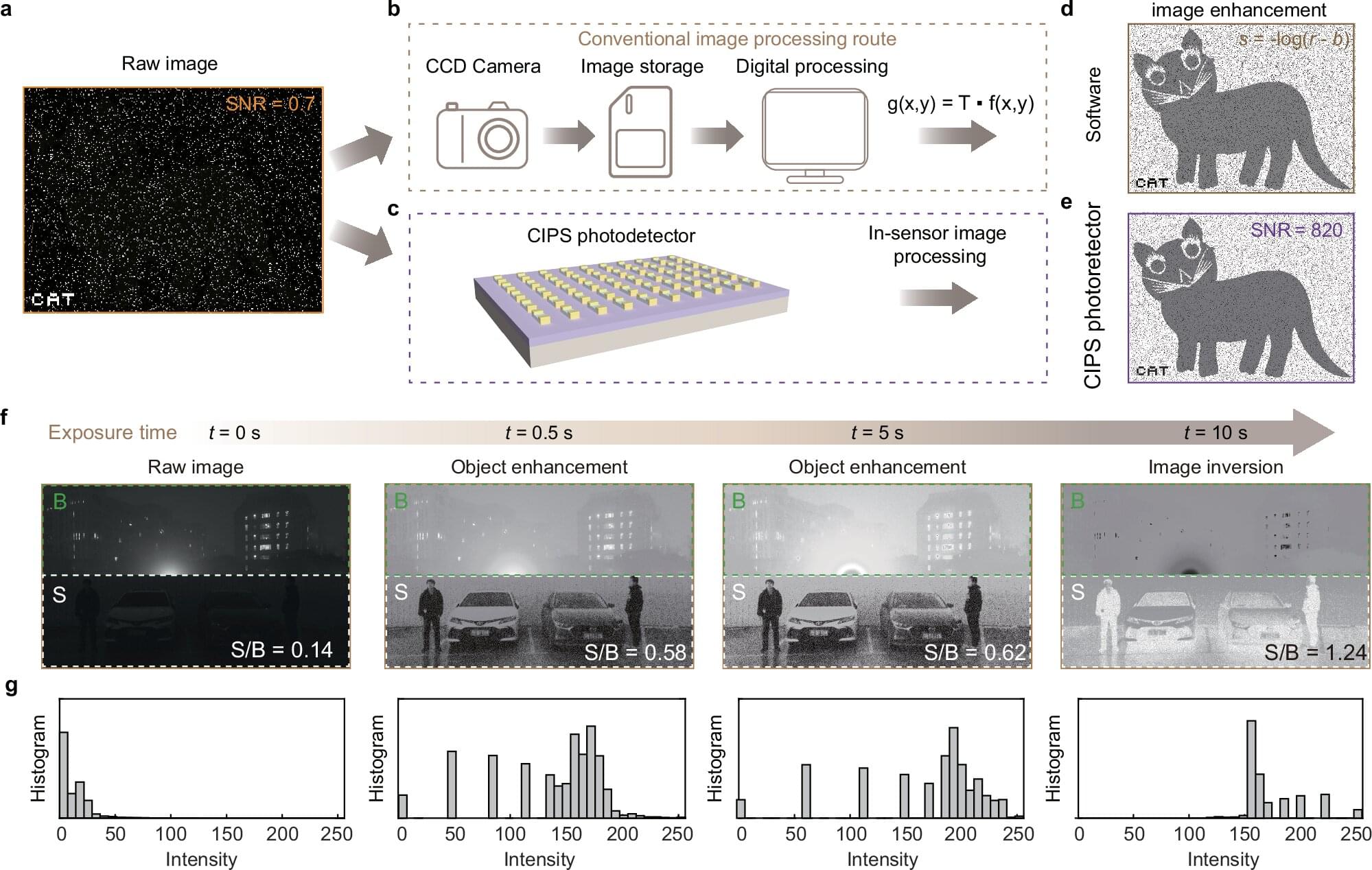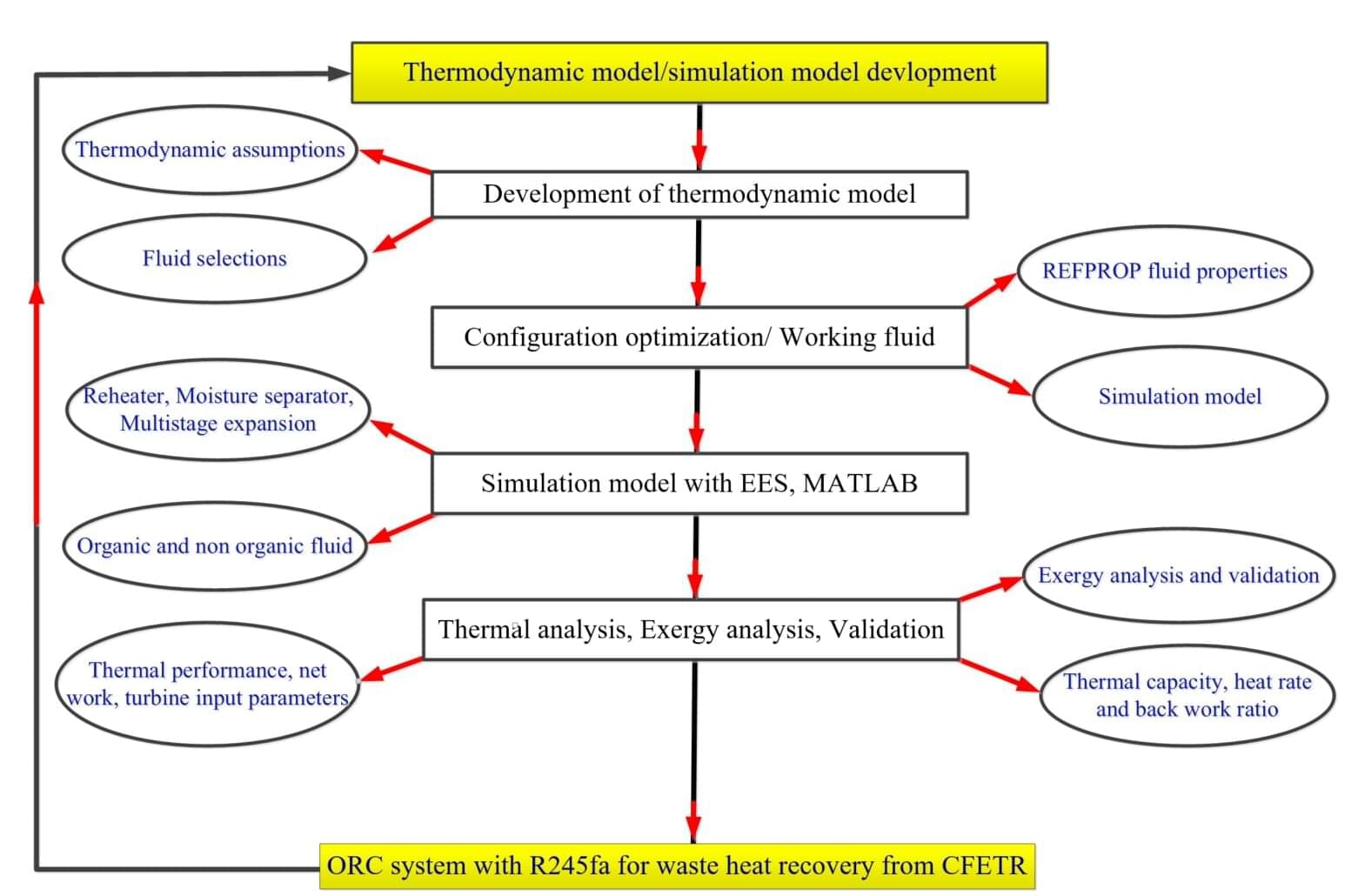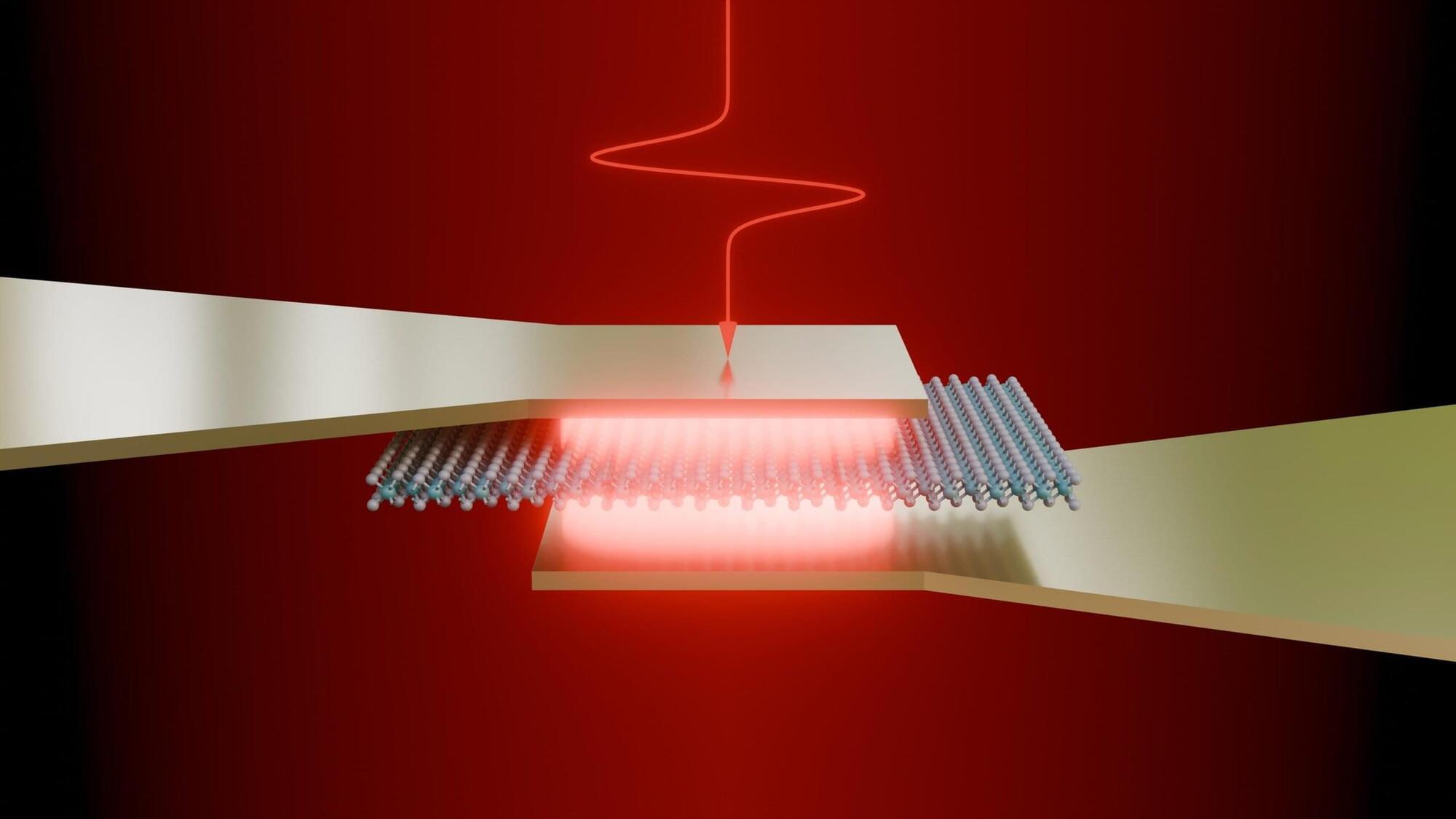In a major step toward next-generation electronics, researchers at the University of Minnesota Twin Cities have discovered a way to manipulate the direction of charge flow in ultrathin metallic films at room temperature using light. This discovery opens the door to more energy-efficient optical sensors, detectors, and quantum information devices.
The research is published in Science Advances.
The team showed that ultra-thin layers of ruthenium dioxide (RuO2), grown on titanium dioxide (TiO2), can be made to behave differently depending on direction—both in how they respond to light and how electricity moves through them.
